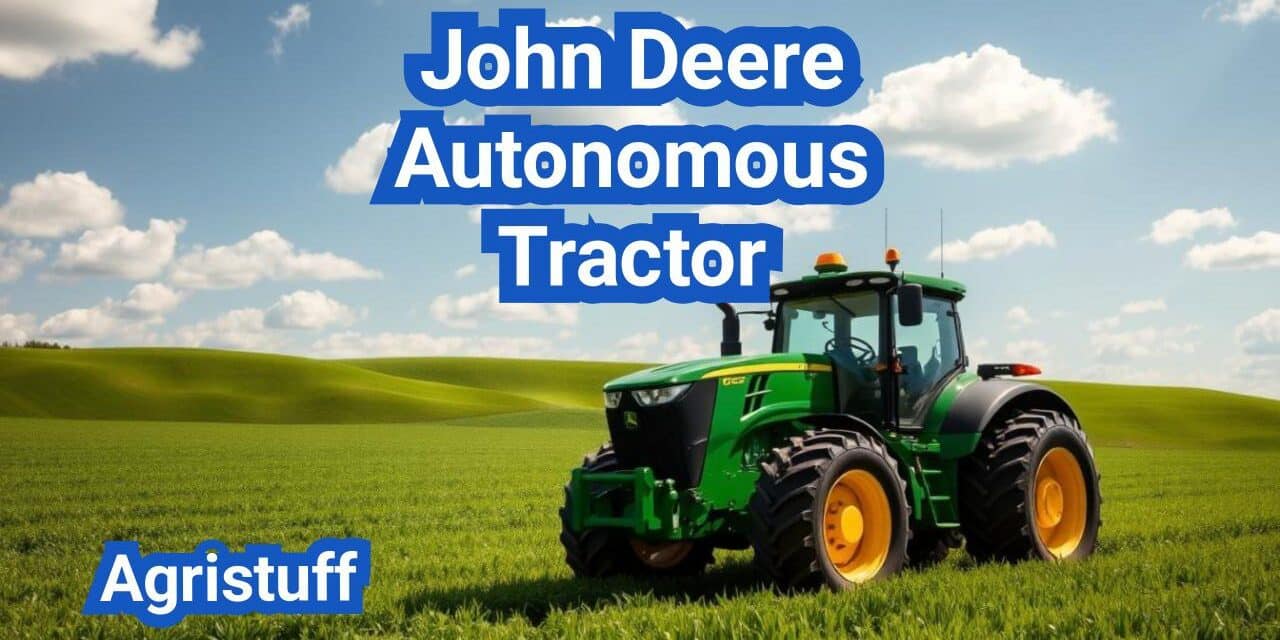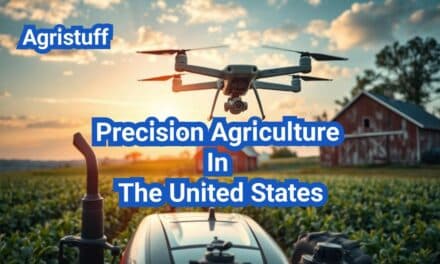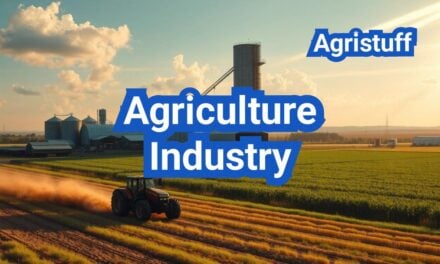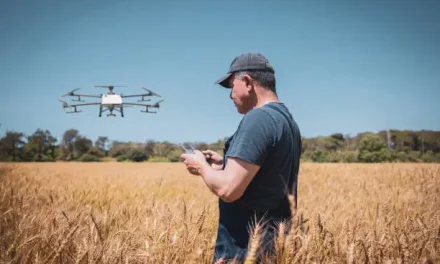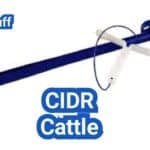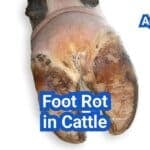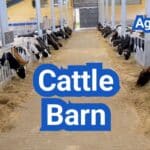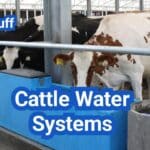The introduction of the autonomous tractor by John Deere is revolutionizing the agricultural landscape, particularly for mid-size farms. This innovative farming equipment is designed to enhance precision tillage automation, making farming practices more efficient and less labor-intensive.
With the integration of advanced technology, the john deere autonomous tractor offers significant labor savings for mid-size farms. By automating tasks such as tillage, farmers can allocate resources more effectively, improving overall productivity.
The precision tillage automation capabilities of this tractor not only reduce the workload but also contribute to more sustainable farming practices. As a result, mid-size farms can benefit from increased efficiency and reduced operational costs.
Key Takeaways
- Enhanced precision tillage automation for more efficient farming practices.
- Significant labor savings for mid-size farms through automation.
- Improved productivity and resource allocation.
- Contribution to more sustainable farming practices.
- Increased efficiency and reduced operational costs for mid-size farms.
The Evolution of Farm Automation in the U.S.
The history of farm automation in the United States is a story of relentless innovation, from manual labor to sophisticated mechanical and digital solutions. This transformation has been driven by the need for increased efficiency, productivity, and reduced labor costs.
From Manual Labor to Mechanical Innovation
The early days of U.S. agriculture were marked by manual labor, with farmers relying on simple tools and animal power. The introduction of mechanical innovations, such as the steel plow and reaper, revolutionized farming practices, enabling farmers to cultivate and harvest larger areas with less labor.
Mechanization continued to advance throughout the 20th century, with the introduction of tractors and other machinery that significantly improved farm productivity. These mechanical innovations laid the groundwork for the digital agriculture revolution that followed.
The Digital Agriculture Revolution
The advent of digital technologies has transformed the agricultural landscape, enabling farmers to make data-driven decisions and optimize their operations. precision agriculture, which involves the use of GPS, sensors, and other technologies to precision-apply inputs such as seeds, fertilizers, and pesticides, has become increasingly prevalent.
John Deere has been at the forefront of this digital revolution, investing heavily in the development of precision agriculture technologies. The company’s AutoTrac system, which enables tractors to follow precise paths, has been widely adopted by farmers across the United States.
John Deere’s Path to Autonomy
John Deere’s journey towards autonomy has been a long-term effort, with significant investments in AI and computer vision. The company’s autonomous tractor technology is the culmination of nearly two decades of research and development.
A key figure in this journey has been Jahmy Hindman, John Deere’s Senior Vice President of Production and Precision Ag. Under his leadership, the company has made significant strides in the development of autonomous farming solutions.
| Year | Milestone |
|---|---|
| 2000 | Introduction of AutoTrac system |
| 2010 | Development of precision agriculture technologies |
| 2020 | Launch of autonomous tractor technology |
The evolution of farm automation in the U.S. is a testament to the industry’s commitment to innovation and efficiency. As technology continues to advance, we can expect to see even more sophisticated autonomous farming solutions emerge.
The John Deere Autonomous Tractor: An Overview

With the introduction of its autonomous tractor, John Deere continues to push the boundaries of farm automation. This innovative machine is built on the robust 8R Series tractor platform, known for its reliability and versatility in mid-size farming operations.
The 8R Series Platform
The John Deere 8R Series tractor is the foundation for the autonomous tractor, offering a powerful and adaptable base that can handle various farming tasks. Its design allows for the seamless integration of the autonomy kit, making it an ideal platform for advanced farming technology.
Key Components of the Autonomy Kit
The autonomy kit is a comprehensive system that includes advanced cameras and AI processing capabilities. These components work together to enable the tractor to navigate and operate autonomously, making decisions based on real-time data and pre-programmed instructions.
- 360-degree camera system for obstacle detection
- Advanced AI processing for real-time decision-making
- Integration with John Deere’s precision agriculture technology
Second-Generation Improvements
The second-generation autonomy system brings significant improvements over its predecessor, including enhanced sensor accuracy and expanded AI capabilities. These advancements allow for more precise operation and better adaptation to various field conditions, further increasing the efficiency and productivity of mid-size farms.
By integrating these cutting-edge technologies, John Deere’s autonomous tractor is set to revolutionize farming practices, offering mid-size farms a powerful tool to improve their operations and stay competitive in a rapidly evolving agricultural landscape.
Core Technology Behind the Autonomous System
At the heart of the John Deere autonomous tractor lies a complex system of technologies working in harmony to enable precise and efficient farming operations. This sophisticated autonomy kit is designed to navigate and operate the tractor with minimal human intervention.
360-Degree Cameras and Perception System
The autonomous tractor is equipped with 360-degree cameras that provide a comprehensive view of the surroundings. These cameras are crucial for detecting obstacles, monitoring field conditions, and ensuring safe operation. The perception system processes the visual data from these cameras, allowing the tractor to make informed decisions in real-time.
The integration of AI processing with the camera system enables the tractor to identify and respond to various field conditions, such as detecting crops, weeds, and potential hazards.
Neural Network and AI Processing
The neural network is a critical component of the autonomy kit, enabling the tractor to learn from experience and improve its performance over time. By analyzing data from various sensors and cameras, the neural network can predict and adapt to changing field conditions, optimizing farming operations.
GPS and StarFire RTK Accuracy
GPS technology, combined with John Deere’s StarFire RTK system, provides the tractor with precise location information and navigation capabilities. This system ensures that the tractor operates with high accuracy, achieving centimeter-level precision in field operations.
| Technology | Description | Benefit |
|---|---|---|
| 360-Degree Cameras | Comprehensive view of surroundings | Enhanced safety and obstacle detection |
| Neural Network and AI | Advanced data processing and prediction | Improved performance and adaptability |
| GPS and StarFire RTK | Precise navigation and location | Centimeter-level accuracy in operations |
The combination of these technologies makes the John Deere autonomous tractor a powerful tool for mid-size farms, enhancing efficiency, productivity, and safety.
How to Prepare Your Farm for Autonomous Equipment

The integration of autonomous equipment on farms demands careful planning and infrastructure assessment. As you consider adopting autonomous tractors like the John Deere Autonomous Tractor, it’s essential to evaluate your farm’s readiness across several key areas.
Infrastructure Requirements
Preparing your farm for autonomous equipment begins with assessing and potentially upgrading your infrastructure. This includes ensuring that your fields are properly mapped and that any physical barriers or obstacles are identified and addressed. JDLink connectivity plays a crucial role here, as it enables seamless communication between your equipment and the John Deere Operations Center.
Connectivity Considerations
A robust and reliable connectivity solution is vital for the operation of autonomous farming equipment. JDLink connectivity provides real-time data transfer between your autonomous tractors and the Operations Center Mobile app, allowing for remote monitoring and management. Ensuring that your farm has adequate cellular coverage or exploring alternative connectivity solutions like satellite internet is crucial for uninterrupted operation.
- Assess your current internet connectivity.
- Consider upgrading to a more robust connectivity solution if necessary.
- Ensure compatibility with JDLink and Operations Center Mobile.
Staff Training Needs
While autonomous equipment reduces the need for manual labor in certain tasks, it also introduces new requirements for staff training. Your team will need to be proficient in using the Operations Center Mobile app to monitor and manage autonomous operations. Training should cover how to interpret data provided by the system, perform routine checks, and intervene when necessary.
Investing in staff training not only enhances the efficiency of your autonomous equipment but also ensures safety and maximizes the return on your investment. As autonomous farming technology continues to evolve, ongoing education and training will be key to staying ahead.
Setting Up Your John Deere Autonomous Tractor
Configuring your John Deere autonomous tractor is the first step towards revolutionizing your farming operations. This process involves several critical steps that ensure your tractor is ready for efficient and accurate operation.
Initial Configuration Steps
The initial setup of your John Deere autonomous tractor begins with configuring the autonomy kit on the 8R Series platform. This involves:
- Installing the necessary hardware and software components
- Activating the autonomy features through the tractor’s control system
- Performing a series of diagnostic checks to ensure all systems are functioning correctly
It’s crucial to follow the manufacturer’s instructions during this process to avoid any potential issues with the tractor’s autonomous capabilities.
Field Mapping and Boundary Setting
Accurate field mapping is essential for the effective operation of your John Deere autonomous tractor. This process involves:
- Creating a digital map of your field using GPS and other spatial data
- Defining the operational boundaries within the field
- Identifying any obstacles or areas to be avoided
Field mapping not only enhances the tractor’s navigation but also contributes to more precise farming practices.
Implement Calibration Process
The implement calibration process is vital for ensuring that the tractor’s attachments are properly configured for autonomous operation. This involves:
- Calibrating the implement’s hydraulic systems
- Adjusting the implement’s settings for optimal performance
- Testing the implement’s functionality in autonomous mode
Proper implement calibration is key to achieving the desired farming outcomes and maximizing the benefits of your John Deere autonomous tractor.
Step-by-Step Operation Guide

Getting started with the John Deere autonomous tractor involves several key steps that ensure safe and effective operation. This guide will walk you through the process, from pre-operation checks to monitoring and intervention.
Pre-Operation Safety Checklist
Before activating the autonomous mode, it’s crucial to complete a thorough safety checklist. This includes:
- Ensuring the tractor is properly maintained and serviced.
- Checking for any software updates and installing them if necessary.
- Verifying that all sensors and cameras are clean and unobstructed.
- Confirming that the area is clear of obstacles and personnel.
Completing this checklist ensures a safe operating environment for both the tractor and surrounding personnel.
Programming Field Tasks
To program field tasks, follow these steps:
- Access the Operations Center Mobile app or JDLink platform.
- Select the desired field and operation type (e.g., planting, spraying).
- Define the task boundaries and any specific parameters (e.g., depth, rate).
- Review and confirm the task details before initiating the operation.
Monitoring Autonomous Operations
While the tractor operates autonomously, continuous monitoring is essential. Use the Operations Center Mobile app or JDLink to:
- Track the tractor’s progress and location in real-time.
- Monitor performance metrics, such as speed and implement status.
- Receive alerts for any issues or anomalies detected during operation.
Intervention Protocols When Needed
In the event of an unexpected situation or system alert, be prepared to intervene. This may involve:
- Understanding the nature of the alert or issue.
- Taking control of the tractor manually if necessary.
- Troubleshooting or resolving the issue before resuming autonomous operation.
Regular training and familiarity with intervention protocols are crucial for effective and safe operation.
Mastering JDLink and Operations Center Mobile

To maximize the benefits of autonomous tractors, farmers must become proficient in using JDLink and Operations Center Mobile. These powerful tools offer a suite of features designed to enhance farm productivity and efficiency.
Remote Monitoring Capabilities
JDLink and Operations Center Mobile provide farmers with the ability to monitor their autonomous tractors remotely. This means that farmers can keep track of their equipment’s performance and status from anywhere, at any time, using their mobile devices or computers.
Key benefits of remote monitoring include:
- Real-time updates on tractor performance and location
- Alerts for potential issues or maintenance needs
- The ability to adjust settings or intervene if necessary
Real-Time Data Analysis
The data collected by JDLink and Operations Center Mobile is not just for monitoring; it’s also used for in-depth analysis. Farmers can access detailed reports on their tractor’s performance, helping them make informed decisions about their operations.
Real-time data analysis enables farmers to:
- Optimize tractor performance based on real-time conditions
- Identify trends and patterns in their operations
- Make data-driven decisions to improve efficiency and productivity
Troubleshooting Through the Platform
One of the most valuable features of JDLink and Operations Center Mobile is the ability to troubleshoot issues directly through the platform. This can significantly reduce downtime and help farmers resolve problems quickly.
The troubleshooting capabilities include:
- Diagnostic tools to identify and resolve issues
- Guided procedures for common maintenance tasks
- Access to support resources and expert assistance
By mastering JDLink and Operations Center Mobile, farmers can unlock the full potential of their autonomous tractors, leading to improved productivity, efficiency, and profitability.
Precision Tillage Automation for Mid-Size Farms

By adopting precision tillage automation, mid-size farms can significantly improve productivity. Precision tillage automation enables farmers to optimize soil preparation, reduce labor, and enhance crop yields. This section explores how mid-size farms can leverage precision tillage automation, focusing on configuring TruSet for different soil types, making automatic adjustments based on field conditions, and monitoring performance.
Configuring TruSet for Different Soil Types
TruSet technology allows for precise configuration based on various soil types, ensuring optimal tillage performance. To configure TruSet:
- Identify the soil type in your field (clay, loam, sand, etc.)
- Adjust TruSet parameters according to the soil type
- Use John Deere’s soil mapping tools to create detailed soil maps
For instance, when using a TruSet-enabled chisel plow, farmers can make precise adjustments to tillage depth and intensity based on soil conditions. This level of precision helps in maintaining soil health and structure.
Automatic Adjustments Based on Field Conditions
The John Deere Autonomous Tractor, equipped with TruSet, can make automatic adjustments based on real-time field conditions. This includes:
- Adjusting tillage depth based on soil moisture levels
- Modifying tillage intensity according to soil density
- Optimizing tractor speed for uniform tillage
Performance Monitoring and Refinement
Continuous monitoring of tillage performance is crucial for achieving optimal results. The Operations Center Mobile app allows farmers to:
- Monitor tillage operations in real-time
- Analyze performance data to identify areas for improvement
- Refine TruSet configurations based on historical data
By leveraging these features, mid-size farms can achieve higher efficiency and better crop yields through precision tillage automation.
Safety Standards and Fail-Safe Mechanisms

The autonomous tractor from John Deere boasts a robust safety framework, including obstacle detection and emergency stop protocols. This comprehensive approach to safety is crucial for the successful integration of autonomous equipment on mid-size farms.
Obstacle Detection and Avoidance Systems
The John Deere autonomous tractor is equipped with a sophisticated obstacle detection system, utilizing 360-degree cameras and advanced perception technology to identify potential hazards in real-time. This system enables the tractor to navigate complex farm environments safely.
- Advanced camera systems for comprehensive coverage
- Real-time processing for immediate response to obstacles
- Integration with the tractor’s control system for seamless operation
Emergency Stop Protocols
In the event of an unexpected situation, the John Deere autonomous tractor is designed to initiate an emergency stop rapidly and safely. This protocol is crucial for preventing accidents and ensuring the well-being of farm workers and bystanders.
- Automatic detection of emergency situations
- Rapid shutdown sequence to minimize risk
- Alert system to notify farm operators of the situation
Compliance with Farm Autonomy Safety Standards
John Deere has ensured that its autonomous tractor complies with relevant farm autonomy safety standards, adhering to guidelines that govern the development and operation of autonomous agricultural equipment. This compliance is vital for maintaining a safe working environment on farms.
The safety features and protocols implemented in the John Deere autonomous tractor underscore the company’s commitment to innovation and safety in agricultural technology. By integrating advanced safety standards and fail-safe mechanisms, John Deere is setting a new benchmark for the industry.
Overcoming Connectivity Challenges in Rural Areas

Connectivity in rural areas remains a critical barrier to the widespread adoption of autonomous farming technologies. As farms increasingly adopt autonomous equipment like the John Deere Autonomous Tractor, addressing these connectivity challenges becomes essential for efficient operation.
Satellite Connectivity Solutions
One of the primary solutions to rural connectivity issues is satellite connectivity. Satellite internet provides a reliable means of connecting autonomous tractors to the necessary operational platforms, such as JDLink and Operations Center Mobile.
Key benefits of satellite connectivity include:
- Broad coverage, including rural and remote areas
- Reliable connection for real-time data transmission
- Support for critical farm operations, including autonomous tractor management
Backup Systems for Remote Operations
In addition to satellite connectivity, implementing backup systems is crucial for maintaining continuous operation. These systems ensure that autonomous tractors can continue to function even in the event of a primary connectivity failure.
Some effective backup systems include:
- Redundant cellular connections
- Secondary satellite links
- Local area network (LAN) failovers
Future Connectivity Improvements
The future of rural connectivity is promising, with ongoing advancements in technology set to further support autonomous farming operations. Emerging technologies such as 5G networks and Low Earth Orbit (LEO) satellites are expected to enhance connectivity.
Potential future improvements include:
- Increased bandwidth for more data-intensive applications
- Lower latency for real-time operations
- Better coverage in remote areas
Maintenance Requirements for the John Deere Autonomous Tractor
To ensure the longevity and efficiency of your John Deere autonomous tractor, regular maintenance is essential. This involves several key tasks that help maintain the tractor’s advanced autonomous capabilities.
Regular Software Updates
The John Deere autonomous tractor relies on sophisticated software to operate efficiently. Regular software updates are crucial to enhance performance, fix bugs, add new features, and improve security.
- Enhance performance
- Fix bugs
- Add new features
- Improve security
These updates should be performed as recommended by John Deere to ensure your tractor remains compatible with the latest technology and farm management systems.
Sensor Cleaning and Calibration
The autonomous tractor’s sensors are its “eyes” and “ears.” Regular cleaning and calibration of these sensors are vital to maintain their accuracy.
- Cleaning cameras and lidar sensors
- Checking for physical damage
- Calibrating sensors according to manufacturer guidelines
Proper sensor maintenance ensures the tractor can accurately detect obstacles and navigate fields effectively.
Preventative Maintenance Schedule
A preventative maintenance schedule is critical to extend the lifespan of your John Deere autonomous tractor.
- Daily checks on tire pressure and fluid levels
- Regular inspections of hydraulic systems
- Scheduled servicing of the engine and transmission
By following this schedule, you can identify potential issues before they become major problems, reducing downtime and maintaining productivity.
Labor Savings and ROI Analysis for Mid-Size Farms

Adopting the John Deere autonomous tractor can significantly impact labor savings and return on investment (ROI) for mid-size farms. By automating various farming tasks, these farms can reduce their reliance on manual labor, thereby decreasing labor costs and potentially increasing productivity.
Calculating Labor Hour Reduction
To understand the potential labor savings, mid-size farms need to calculate the reduction in labor hours achieved through the use of autonomous tractors. This involves assessing the time spent on tasks such as plowing, planting, and harvesting before and after the adoption of autonomous technology.
Key factors to consider:
- Number of acres farmed
- Type of crops and their specific requirements
- Existing labor costs and practices
Long-Term Cost Analysis
A comprehensive ROI analysis requires a long-term perspective on costs. This includes the initial investment in the autonomous tractor, ongoing maintenance costs, and any additional expenses related to training or infrastructure adjustments.
It’s crucial to weigh these costs against the potential savings and productivity gains.
Financing and Leasing Options
To make the transition to autonomous farming more accessible, John Deere offers various financing and leasing options. Understanding these options is vital for mid-size farms to manage their cash flow and make informed decisions about their investment.
- Financing plans tailored to farm income cycles
- Leasing options for the latest technology
Break-Even Point Calculations
Calculating the break-even point is essential for understanding when the investment in an autonomous tractor will start to yield returns. This involves analyzing the total costs of ownership against the savings and additional revenue generated by the technology.
Factors influencing the break-even point include:
- Initial purchase or leasing cost
- Ongoing operational savings
- Potential increases in crop yield or quality
Integrating Autonomous Tractors with Existing Farm Equipment

The integration of John Deere’s autonomous tractors with existing farm equipment is a crucial step towards a more efficient farming operation. This process involves assessing the compatibility of legacy implements, creating a mixed-autonomy operation, and exploring upgrade paths for existing John Deere equipment.
Compatibility with Legacy Implements
One of the primary concerns for farmers adopting autonomous tractors is whether their existing implements will be compatible. John Deere has designed its autonomous tractors to be versatile, allowing integration with a wide range of implements. Farmers can continue using their existing equipment, reducing the need for significant upfront investments in new machinery.
To ensure compatibility, farmers should:
- Check the implement’s hydraulic and electrical systems for compatibility with the autonomous tractor’s systems.
- Consult with John Deere representatives to assess the implement’s compatibility and potential need for upgrades.
- Consider the implement’s age and condition, as older models might require additional maintenance or upgrades to work effectively with autonomous tractors.
Creating a Mixed-Autonomy Operation
A mixed-autonomy operation allows farmers to gradually transition to fully autonomous farming by initially incorporating autonomous tractors alongside manned equipment. This approach enables farmers to:
- Gain experience with autonomous technology.
- Assess the benefits and challenges of autonomy in their specific farming context.
- Gradually scale up their autonomous operations as they become more comfortable with the technology.
John Deere’s autonomous tractors are designed to work in tandem with other equipment, allowing for a seamless transition between autonomous and manual operations.
Upgrade Paths for Existing John Deere Equipment
For farmers already using John Deere equipment, there are opportunities to upgrade to autonomous or semi-autonomous capabilities. John Deere offers various upgrade paths, including:
- Retrofitting existing tractors with autonomy kits.
- Upgrading to newer models with advanced autonomous features.
- Integrating precision agriculture tools with existing equipment to enhance efficiency and productivity.
By exploring these upgrade paths, farmers can maximize their investment in existing equipment while moving towards a more autonomous farming operation.
As the agricultural industry continues to evolve, the ability to integrate autonomous tractors with existing equipment will play a crucial role in shaping the future of farming. By understanding the compatibility, operational flexibility, and upgrade options available, farmers can make informed decisions about adopting autonomous technology.
Real-World Applications: Mid-Size Farm Case Studies
Real-world applications of the John Deere autonomous tractor on mid-size farms have yielded impressive results. Several farms have successfully integrated this technology, achieving significant improvements in their operations.
Success Stories from 500-2000 Acre Operations
Mid-size farms ranging from 500 to 2000 acres have reported substantial gains in efficiency and productivity after adopting the John Deere autonomous tractor. For instance, a farm in Iowa increased its corn yield by 15% through precise autonomous planting and harvesting.
Another farm in Nebraska saw a reduction in labor costs by 20% by leveraging the autonomous tractor for tasks such as tillage and crop monitoring.
Productivity Improvements in Various Crops
The John Deere autonomous tractor has been successfully used in various crops, including corn, soybeans, and wheat. Farms have reported increased productivity due to the tractor’s ability to work around the clock without breaks, optimizing planting and harvesting schedules.
- Corn yields increased by up to 15%.
- Soybean production saw a 10% boost.
- Wheat farming efficiency improved by 12%.
Overcoming Implementation Challenges
While implementing the John Deere autonomous tractor, mid-size farms faced several challenges, including initial setup costs and staff training. However, through strategic planning and support from John Deere, these farms were able to overcome these hurdles.
Farms adopted a phased implementation approach, starting with small areas and gradually expanding to larger sections. This gradual integration helped in minimizing disruptions and allowed staff to become familiar with the new technology.
The Future of Agricultural AI and Computer Vision
The future of farming is being shaped by advancements in agricultural AI and computer vision, offering unprecedented opportunities for efficiency and productivity. As these technologies continue to evolve, we can expect significant improvements in various aspects of farm management.
Upcoming Features from John Deere
John Deere is at the forefront of integrating AI and computer vision into farming equipment. Upcoming features include enhanced object detection, allowing for more precise identification of crops, weeds, and obstacles. This technology will enable farmers to optimize their use of resources, such as water and fertilizers, leading to more sustainable farming practices.
Another significant development is the improvement in autonomous navigation systems. These advancements will enable tractors to navigate complex field layouts with greater accuracy, reducing the need for manual intervention and increasing overall productivity.
Integration with Drone Technology
The integration of drone technology with agricultural AI is set to revolutionize crop monitoring and management. Drones equipped with high-resolution cameras and sensors can capture detailed images of fields, which are then analyzed using AI algorithms to identify issues such as pest infestations, nutrient deficiencies, and irrigation problems.
This integration enables farmers to respond quickly to emerging issues, potentially saving significant amounts of time and resources. Moreover, the data collected can be used to create detailed field maps, helping farmers make informed decisions about planting, harvesting, and crop management.
Predictive Analytics and Decision Support
Predictive analytics is another area where agricultural AI is making significant strides. By analyzing historical data, weather patterns, and soil conditions, AI systems can predict crop yields, identify potential issues before they become major problems, and provide decision support to farmers.
This capability allows farmers to plan more effectively, optimize their resources, and make data-driven decisions. For instance, predictive analytics can help determine the optimal time for planting or harvesting, potentially increasing yields and reducing waste.
Transforming Mid-Size Farm Operations
The John Deere autonomous tractor is transforming mid-size farm operations by bringing precision agriculture to the forefront. With its advanced autonomy kit and 360-degree cameras, this tractor enables farmers to optimize field operations, reduce labor costs, and improve overall productivity.
By leveraging precision agriculture techniques, mid-size farms can now achieve greater efficiency and accuracy in their farming practices. The autonomous tractor’s ability to operate with precision, guided by GPS and StarFire RTK accuracy, ensures that every task is performed optimally.
As the agricultural industry continues to evolve, the adoption of autonomous tractors is set to play a crucial role in shaping the future of farming. With its potential to transform mid-size farm operations, the John Deere autonomous tractor is poised to make a significant impact on the way farms operate, making them more efficient, productive, and sustainable.
FAQ
What is the John Deere autonomous tractor?
The John Deere autonomous tractor is a self-driving tractor designed for mid-size farms, utilizing advanced technologies like AI, computer vision, and GPS to improve farming efficiency and precision.
How does the John Deere autonomous tractor work?
The tractor uses a combination of 360-degree cameras, a neural network, and AI processing to navigate and perform tasks autonomously, with the help of GPS and StarFire RTK accuracy for precise navigation.
What are the benefits of using the John Deere autonomous tractor?
The benefits include improved precision tillage, labor savings, increased efficiency, and enhanced safety features, making it an attractive solution for mid-size farms.
How do I prepare my farm for the John Deere autonomous tractor?
Preparation involves assessing infrastructure requirements, ensuring reliable connectivity, and training staff to effectively use and manage the autonomous equipment.
What is the role of JDLink and Operations Center Mobile in managing the autonomous tractor?
JDLink and Operations Center Mobile enable remote monitoring, real-time data analysis, and troubleshooting, allowing farmers to efficiently manage their autonomous tractor operations.
How does the John Deere autonomous tractor ensure safety?
The tractor is equipped with obstacle detection and avoidance systems, emergency stop protocols, and complies with farm autonomy safety standards to ensure safe operation.
Can the John Deere autonomous tractor be integrated with existing farm equipment?
Yes, the tractor can be integrated with compatible legacy implements, and John Deere provides upgrade paths for existing equipment to ensure seamless integration.
What kind of maintenance is required for the John Deere autonomous tractor?
Regular maintenance includes software updates, sensor cleaning and calibration, and a preventative maintenance schedule to ensure optimal performance.
How does the John Deere autonomous tractor handle connectivity challenges in rural areas?
The tractor can utilize satellite connectivity solutions, backup systems for remote operations, and future connectivity improvements to overcome rural connectivity challenges.
What is the expected return on investment (ROI) for mid-size farms adopting the John Deere autonomous tractor?
The ROI can be significant, with labor savings, increased efficiency, and improved productivity contributing to a positive financial impact, which can be calculated using labor hour reduction, long-term cost analysis, and break-even point calculations.
What future developments can we expect in agricultural AI and computer vision from John Deere?
John Deere is expected to continue innovating and integrating new technologies, such as drone technology and predictive analytics, to further enhance the capabilities of their autonomous tractors and farming equipment.
Conclusion of: John Deere Autonomous Tractor
Overview: Why autonomy matters for U.S. growers right now
The john deere autonomous tractor arrives as U.S. producers navigate labor shortages, narrow margins, and the need to hit tight field windows without adding full-time headcount. Autonomy targets repetitive, time-critical jobs—especially in peak seasons—so one manager can oversee more acres with fewer bottlenecks, while the rest of the crew focuses on planting, spraying, or livestock chores. For mid-size farms that feel every hour and gallon, the john deere autonomous tractor is less a gadget and more a way to protect timeliness, consistency, and cost control. USDA ERS: Farm labor context
What it is: An 8R platform plus autonomy kit and a connected workflow
The john deere autonomous tractor builds on the proven 8R row-crop platform with an autonomy kit, StarFire guidance, perception cameras, geofencing, and a connected software stack. You configure jobs, set boundaries, and start work from Operations Center Mobile, then supervise remotely from anywhere with coverage. The john deere autonomous tractor is designed to perform within a defined geofence, automatically stopping for obstacles and alerting you for exceptions. John Deere — Autonomous Tractor overview
How it “sees”: Cameras, depth perception, and AI classification
Vision is the heart of the john deere autonomous tractor. Multiple stereo camera pairs provide 360° coverage and depth, while onboard AI classifies pixels to detect people, rocks, debris, or animals in real time. That lets the john deere autonomous tractor decide whether to continue, slow, or stop, with alerts surfaced to your phone for quick action. Redundant viewpoints and continuous learning help the system perform across dust, dusk, and variable field conditions. IEEE Spectrum: Inside Deere’s autonomy
Precision on the line: StarFire and RTK-class accuracy
To keep passes straight and consistent, the john deere autonomous tractor relies on StarFire™ guidance with RTK-class corrections for repeatable, sub-inch horizontal accuracy. That precision reduces overlap, missed strips, and fuel waste—small percent gains that compound over hundreds of acres. With the john deere autonomous tractor, accuracy underpins autonomy, because guidance quality directly affects job quality and ROI. John Deere — StarFire 7000 Receiver
Your command center: Plan, start, and monitor from your phone
Operations Center is where the john deere autonomous tractor becomes a management tool. You assign fields, set implement configs, view live progress, and check estimated time to completion. If the john deere autonomous tractor pauses for an obstacle, you get an alert and can decide whether to resume after a check. The same platform stores the agronomic record so you can audit performance and plan next passes. John Deere — Operations Center
Connectivity policy: JDLink to move data without a monthly fee
Connectivity is essential for the john deere autonomous tractor, and JDLink™ now allows sending machine and agronomic data to Operations Center without an extra subscription fee (hardware and signal still required). That keeps your scaling costs predictable as you add more connected machines alongside a john deere autonomous tractor, and it simplifies remote support and diagnostics. John Deere — JDLink connectivity
Field workflow: Geofencing, pre-checks, and swipe-to-start
Before running, you stage the implement, confirm the geofence, run safety checks, and verify guidance lines so the john deere autonomous tractor starts in a known-good state. After a final scan for obstacles, you swipe to begin. From there, the john deere autonomous tractor executes the plan and sends you notifications if anything deviates from SOP—fuel, error codes, or unexpected objects. John Deere — Autonomous workflow
First jobs to target: High-hour, lower-complexity tillage
Early deployments emphasize tillage because long, consistent passes benefit most from autonomy and because implement control is mature. With TruSet™ you can adjust depth and downforce on the fly, helping the john deere autonomous tractor keep quality consistent as soils change. Start with fields that have clean borders and fewer obstacles so the john deere autonomous tractor can rack up acres and build your team’s confidence. John Deere — TruSet Tillage Technology
Safety and standards: Building on industry guardrails
Autonomy is safety-first. The john deere autonomous tractor uses perception, geofencing, and controlled stop behaviors, and the industry is aligning around principles like ISO 18497 for highly automated agricultural machines. As you draft farm SOPs, anchor them to recognized guidance so the john deere autonomous tractor integrates cleanly with your existing safety culture. ISO 18497 — Safety of highly automated ag machines
Uptime where cell service is thin: SATCOM as a backstop
Connectivity gaps can stall any connected workflow, including a john deere autonomous tractor. Deere’s collaboration with SpaceX aims to bring Starlink-enabled SATCOM solutions to equipment so guidance lines, prescriptions, and alerts keep moving when cellular dips. That resilience matters if your john deere autonomous tractor runs in remote fields or in hilly terrain with patchy coverage. John Deere — SpaceX collaboration (press release)
Where mid-size fits: A USDA lens on who benefits first
USDA ERS classifies midsize family farms by gross cash farm income roughly between $350,000 and $999,999. In this band, a john deere autonomous tractor can shift labor math by letting a skilled operator run planting or spraying while autonomy handles tillage. If tight windows have you renting extra labor or delaying tasks, the john deere autonomous tractor can turn schedule risk into managed, measurable workflows. USDA ERS — America’s Diverse Family Farms
ROI thinking: Timeliness, overlap, and labor flexibility
Returns from a john deere autonomous tractor often show up first as timeliness: more acres in the right weather window, lower overlap, and fewer “split focus” mistakes when crews are stretched. Layer on reduced idle time and improved documentation, and the john deere autonomous tractor helps narrow cost per acre even before you book any labor savings. Validate with field-by-field KPIs so your numbers, not hype, drive scaling decisions. USDA ERS — Precision ag in U.S. crop production
People and SOP: Autonomy changes work, not responsibility
Assign one person to supervise the john deere autonomous tractor, define response protocols for alerts, and practice safe intervention steps. Clear roles—who refuels, who checks implements, who verifies depth—keep the john deere autonomous tractor productive without creating confusion in busy seasons. Document expectations and refresh training before each major field window. OSHA — Agriculture safety resources
Infrastructure checklist: Guidance, connectivity, and clean data
Three pillars govern a smooth start with a john deere autonomous tractor: (1) high-quality guidance (e.g., StarFire receiver with RTK corrections), (2) reliable connectivity (JDLink plus dealer-advised options), and (3) clean, verified boundaries and AB lines in Operations Center. Shore these up first so the john deere autonomous tractor spends nights working, not waiting on setup fixes. John Deere — StarFire guidance hardware
Close the loop: Data you can act on next season
Every pass from the john deere autonomous tractor feeds job logs into Operations Center—acres/hour, fuel, overlap, and alert history. That data lets you compare fields, tweak prescriptions, and standardize settings that deliver consistent results. Over time, the john deere autonomous tractor becomes both an operator and a historian for your farm. John Deere — Operations Center data & analysis
Data stewardship: Privacy, permissions, and who sees what
Strong governance builds trust as you scale a john deere autonomous tractor. Review who in your operation or dealership can view machine and agronomic data, and align that access with your policies. Transparent practices reduce friction and help you get the most from the john deere autonomous tractor and your broader digital stack. John Deere — Privacy & Data hub
Environmental angle: Less overlap, better soil protection
By holding a consistent line with fewer re-passes, the john deere autonomous tractor can help trim fuel burn and protect soil structure over time. Pair autonomy with conservation tillage or reduced passes where it fits your system, and the john deere autonomous tractor can support both agronomic and environmental goals. USDA NRCS — Conservation tillage
Dealer partnership: Support that scales with your ambitions
Your dealer’s connected support team is a force multiplier for a john deere autonomous tractor, from ensuring the latest software to triaging alerts quickly during crunch time. Align preseason checklists, RTK subscriptions, and spare parts so the john deere autonomous tractor remains a dependable capacity tool, not an experiment, during peak weeks. John Deere — Connected Support
Year-one playbook: Start focused, measure relentlessly
Choose one or two fields with clean edges, run a single operation for a full window, and track KPIs—acres/day, alerts/10 hr, overlap %, and fuel/hour—to judge the john deere autonomous tractor on evidence, not anecdotes. That baseline will tell you whether to expand tasks, fields, or machines next season as the john deere autonomous tractor becomes part of normal operations. John Deere — Autonomous getting started
Procurement reality: Features evolve, pricing and enablement vary by dealer
Because offerings evolve, build your business case for a john deere autonomous tractor with dealer quotes, enablement details, and any required hardware upgrades. Plan sensitivity ranges for fuel, labor, and acres per day so your john deere autonomous tractor pencils out across realistic scenarios rather than a single best-case assumption set. John Deere — Precision Ag technology portfolio
Final thought
The john deere autonomous tractor is less about removing people and more about removing bottlenecks—unlocking nights, protecting windows, and turning plans into predictable progress. If you start with clear SOPs, clean data, and tight feedback loops, the john deere autonomous tractor can earn its keep on mid-size U.S. farms one well-timed pass at a time. Explore Deere’s autonomy hub

